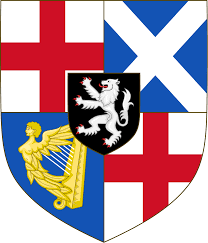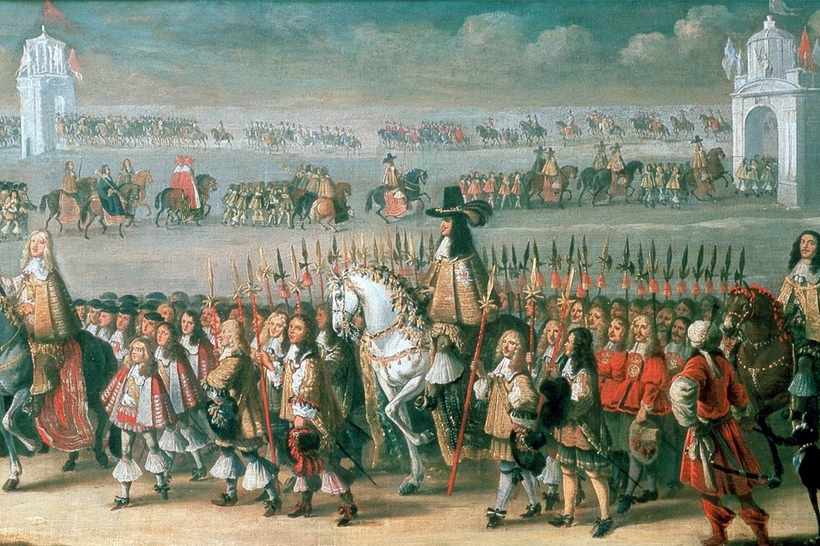
In January 1649 the British king Charles I was found guilty of treason and executed. For the next 11 years (1649 to 1660) the country operated as a republic. The time was divided into two parts – The Rump Parliament (1649-1653), and the Protectorate (1653-1660) – and ended with the restoration of the royal family and coronation of Charles II (Charles I’s son) in 1961.
The Tide Turns Against Charles I: The King vs. Parliament

King Charles I was a widely unpopular king, perceived as believing that being king was a god-given right. Charles used his powers to harness taxes, ignore parliament, and crush dissent. Many people saw him as a tyrant. Negotiations to change the status of the monarchy fell apart and many in The House of Commons (the main part of Britain’s two house parliamentary system) lost faith in the king.
Sensing a lack of change, the army make plans for Charles’s removal. The first step was to remove the king’s supporters from the House of Commons. On December 6th 1648 the leader of the ‘New Model Army’, Colonel Thomas Pride, began to forcibly remove pro-royalty supporters from the House of Commons, and by December 12th 231 of the 471 members of parliament had been barred from entering the House, with 45 of them temporarily detained. ‘Pride’s Purge’ got what it wanted: a new smaller ‘Rump Parliament’ (as opposed to the previous larger ‘Long Parliament’) of around 200 MPs was created.
The army’s chief, Sir Thomas Fairfax, was actually quite removed from this event, but his second-in-command Oliver Cromwell (who was also an MP for Cambridge at the time) was seen as one of the possible instigators for the purge and would go on to take a major role in the republic.

The Vote
‘Pride’s Purge’ had resulted in the smaller ‘Rump Parliament’ of about 200 MPs and a far higher success of removing the king: 83 of the MPs had only been allowed to return if they promised to remove their support of a pro-monarchy bill, 86 of the MPs abstained from attending the House altogether, and the attendance had fallen from over 400 to around 70. This meant the known 71 pro-army MPs had achieved far greater power.
On January 4th 1649 a vote was held which agreed to try the king for treason. It is believed only 46 MPs turned up, with the doors locked to stop others attending, and only 26 voted. Nonetheless, the vote passed. Although the House of Lords rejected the idea, the House of Commons wrote their own act. On January 20th the king’s trial began, although only 68 of the 135 judges turned up (the others did not feel comfortable being involved in ‘regicide’). As the king refused to speak (he did acknowledge the trial as legal), his plea was presumed to be guilty. On January 27th he was found guilty and sentenced to death.
The king was executed on January 30th. The House of Lords was abolished on February 6th, and the monarchy on February 7th. A new ‘Council of State’, made of the Rump Parliament, was established on February 14th.
The Rump Parliament Takes Control

Charles I’s son, also named Charles, was named King in Scotland, but England’s parliament banned the new king. In 1651 Charles’s forces were beaten by Cromwell’s army (Cromwell having left the Parliament to return to soldiering), and Charles escaped to Europe for the next 9 years.
With no royal family The Rump Parliament ran England, Scotland and Ireland. This period is now known as the ‘English Interregnum’ or ‘English Commonwealth’.

The Protectorate
Fearing that the Rump Parliament was swaying back to allowing the monarchy, Cromwell returned to the House seeking change. Having stood up and insulted a few members of the House, he then demanded a group of soldiers take away the speaker’s mace (the sign of power). He and his soldiers then dissolved the Parliament by force. A new religious parliament named ‘The Barebones Parliament (after member Praise-God Barebone) was installed to think of a new system.
The new system was a ‘Protectorate’, with Cromwell named ‘Lord Protectorate’ for life. Cromwell’s rule was seen as tough, and he wanted to make a strong change away from the royal family. Cromwell banned Christmas and other forms of entertainment, thinking they were arrogant or represented the frivolity of the king. However many people felt Cromwell – who regally signed his named ‘Oliver P’ (‘P’ standing for ‘protectorate’) and was addressed as ‘His Highness’ was not a change, but a man who had simply made himself a new king.
The Republic Ends
The republic began to fail after Oliver Cromwell died in 1658 and left his son Richard in charge.
Charles’s supporters saw a chance to bring him back from Europe and make a new king. Richard Cromwell did not have the same control over Parliament, and Charles’s supporters began to gain more influence.
In 1660 Parliament brought the monarchy back. It also declared that Charles II had been king since his father’s death, and that the republic had never happened.
Further royalist parliaments helped cement Charles II’s place as king. The Cromwell era was finished quickly.
Historians generally believe the people were happy to have the new king after the major changes and Cromwell’s hard rules. However, Cromwell and the idea of a republic are still popular today: in 2002 Cromwell was named the 10th Greatest Briton in History in a national vote.
